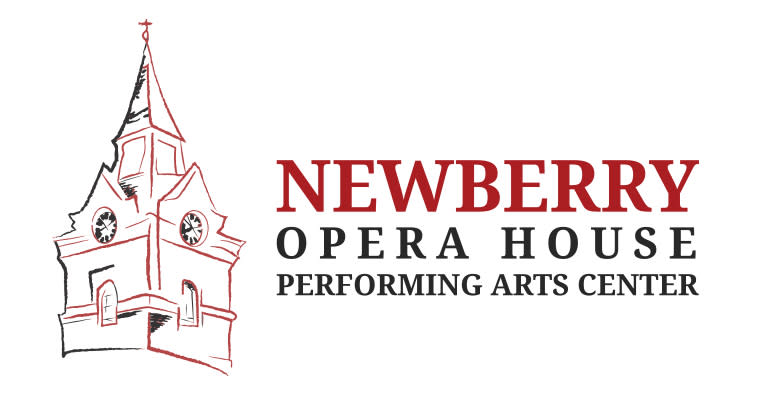Newberry Opera House Performing Arts Center

Newberry Opera House Performing Arts Center
Categories
Arts, Culture & Entertainment
About
Mission Statement
To enhance the economic and cultural development of Newberry County and the Midlands through the window of the arts in concert with educational opportunities for all.
A Brief History:
The Newberry Opera House was completed in 1881 at a cost of $30,000. C.L. Norman, architect from Columbia, S.C., designed the French Gothic-inspired structure. The building was designed as a place of entertainment for the local citizenry and as a seat of government for the city. The building is an excellent example of Victorian civic eclectic architecture.
The building was constructed with brick from three local brickyards. The granite used in the construction came from a quarry approximately two miles outside of the city limits. Local craftsmen’s and artisans’ talents in woodworking and masonry were used throughout the construction of the original building.
The original design called for the first floor to house the fire engine room, council chambers, a clerk’s office, a police officer, and three jail cells. The second floor was a hall 53 by 52 feet with a stage 29 by 52 feet. The floor had an inclination of two feet four inches from the rear of the hall to the stage. In connection with the hall were a ticket office, a "green room", a cloakroom, and three dressing rooms.
The building had a tower 130 feet high topped with a Gar fish weather vane, and the tower housed an E. Howard Tower town clock which was 90 feet from the ground.
A gas lighting system was installed with a reflector, or "sun burner", for added brilliance. Drop curtains and seven scenes or sets for the stage were available. One scene, a landscape, survived to the late 20thcentury.
The Opera House quickly became known as "the entertainment center of the Midlands". On its stage appeared touring companies of New York plays, minstrel and variety shows, famed vocalists and lecturers, magicians and mind readers, novelty acts and boxing exhibitions.
The Opera House was used not only by professional performers but also by the community. Meetings, dances, college commencement exercises, and musicals were held in the spacious auditorium.
Silent "moving pictures" were shown at the Opera House in the early 1900s. A "Thomas Edison Talkie" was presented in the late teens. It used a phonograph record for sound. Slowly, movies replaced the big stage shows, and in the 1920s the Opera House was remodeled as a movie theater.
In 1952 with the showing of The Outlaw, the Opera House was closed as a movie theater. By 1959, there was talk about tearing it down, but a public outcry stopped the wrecking ball. The Newberry Historical Society in 1969 promoted the preservation of the Opera House, as did several other community groups. In 1970 the building was placed on the National Register of Historic Places.
The City of Newberry vacated the building in 1992. The exterior restoration and window replacement were completed in 1994.
The interior renovation was begun in 1996. An additional 10,000 square feet was added to the original building in order to create a full theatrical production facility. The total cost of the renovation was approximately $5,500,000.
The seating capacity is 426 at maximum capacity. The theater is equipped with state of the art lighting and sound systems. The Bayreuth orchestra pit easily accommodates Broadway and operatic productions. The theater boasts a full-size rehearsal hall with an acoustically soundproof, electrically locked door. The theater has electronic capabilities that readily facilitate live television production and transmission.
The citizens of the City of Newberry are proud to be the owners of the Newberry Opera House and contributors to the performing arts in the Midlands of South Carolina. The Newberry Opera House is leased from the City of Newberry and is operated by the Newberry Opera House Foundation.
